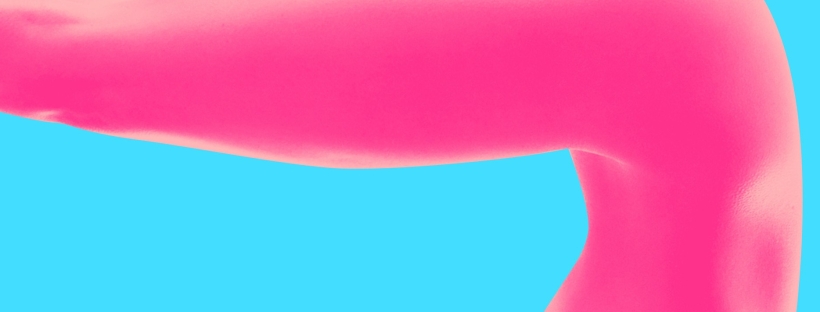I literally have no inclination to write at the moment. It’s not that I don’t have the time, it’s just don’t have the will. I’d be lying if I said this laissez-faire attitude hasn’t spilt over into many other projects. It’s another moment of clarity in the land of the un-routine.
I am still struggling to find normality in this rhythm of irregularity. There are literally no two days alike, from start to finish, and everything in between. Each day is an adventure, an opportunity to build something great from the freedom that lay ahead. Time is but the greatest of these, in all its undervalued glory. We cannot get it back. It can’t be saved-up or bought from the store if we run out. It is an intangible anomaly in a universe of highly accepted tangibility.
I am continually confronted with this new awareness; of time, as a finite resource. We can splish-splash in it all we want but at the end of the day, it will never be the infinity pool we so dream of. It seems a rare case where perception is not in fact reality, yet, here we are. No matter how endless the pool appears, it too is constrained by the limited supply of water, power, and caretakers to maintain it.
Instead, we are confined to an old concrete bowl of times past. This functional enclosure offers us an even spread of this ethereal substance, and like it or not, it begins leaking from the day we are born. Yes, there are things we can do to slow its materialisation. But nought can be done to prevent the inevitability of this future skate rink entirely.

Jana Payne riding the empty well of time.
So, here I am. Confronted daily with my inevitable doom. Face to face with this shrinking mass of water, of time, of life. It is easy to get taken aback by the bleak nature of these facts but that view will not add more hours, or gift extra days. There is no sympathetic response in denying these truths. But, by confronting them head-on, there may be a chance to plough their fields for prosperity. A filling of one’s personal bank if you like; with meaning, fulfilment, and financial reward.
It sounds so noble, doesn’t it? A life worth living. A rebuttal to the expectation that your role as a human being is bound by your economic worth. It is an actuality that has pained me my entire life. Our education system, our workplaces, the nature of big business, and the epidemic of poor management in the smaller. I have turned and twisted. Resisted with subtle and not-so-subtle force. I writhed in internal agony as the necessity of a functional and financial baseline suffocated my true hopes and dreams.

But my perspective has changed, evolved. For the first time, I truly see the benefit in those of you who stay in the world of the new normal. My inner rebellion presented so strong in the past that it pained me to see the greatness of others be suffocated by the wastefulness of the regular. It was a coping mechanism for my own inability to escape, and it manifested in a push onto those around me to do the same. ‘Come on, we can do this together! A walkout, a revolution, a heist of our own lost liberty’. But the motley array of responses were all valid. Facing the alternative, I now realise, is not something I would wish on many. If you get some enjoyment out of whatever it is you do, if you excel in your role, if you are getting paid good money, if you are not in a world of discomfort – stay. Stay as long as you goddamn can. Pursue passionate endeavours and creative ventures outside of these hours. Yes, your time may be limited and your energy depleted. But your financial ability will be plentiful and in this modern world, you must use at least part of these means to practice such worldly delights. I apologise if I ever made you feel that your pathway was not earnest. The ache was mine to own and any attempts to engineer a softened blow to my own outcomes was futile.

Me: Getting Off My High Horse
Enough deflection. Time to shoot the arrow where it belongs.
.
Hello. My name is ZB and I am an alcoholic.
.
I kid, I kid, I’m not really! It just rolls off the tongue so well. Sorry, back on task.
.
My name is Bec and at the ripe age of 32, I have finally been diagnosed with ADHD.
.
Yep, you heard it here first folks! And, unless your life has been touched in some way by this big-bag-of-unfocused-fun, you are likely to have waded through the deep sea of (mostly incorrect) assumptions. I know I was certainly guilty. I reserved these four letters for hyperactive young boys, lazy parenting, and overprescribing doctors. Because it was easy that way. And yes, I’m sure that there’s a percentage of people who fit under this umbrella of stereotypes regardless. Buuuuut, by applying these generalisations to everyone, it further reinforces the negative connotations for people who truly do struggle with this ‘disorder’. It also masks the real issues at hand, such as the high rate of missed diagnosis in young females and adults.
Let’s debunk some of the junk in the trunk, walk with me.
Potatoes-Potahtoes
- The correct term is ADHD, or Attention-Deficit/Hyperactivity Disorder.
- The term ‘ADD’ was eliminated from the diagnostic manual back in 1987.
- Some experts assert that ‘attention deficit’ is a misleading name. ‘Attention deregulation’ may be more accurate since most people with ADHD have more than enough attention — they just can’t harness it in the right direction at the right time with any consistency.1 Read: ADHD is not a damaged or defective nervous system, it is a nervous system that works well – using its own set of rules.2

Epidemiology
- Meta-regression analyses estimate the worldwide prevalence of ADHD at around 6.2% for children and adolescents, and 3.4% in adults.3
- Further reviews across 199 worldwide studies found no significant difference in prevalence between countries. Researchers, therefore argue that ADHD is not a cultural construct associated with a particular geographical location.3
Causes
- As proven by studies of twins and families, ADHD is a highly hereditable condition. Yes! Genetic factors are the major cause of ADHD in individuals.4
- Children whose parents have ADHD have a 40% to 60% chance of also having it. Sometimes a child’s diagnosis can be the first clue that a parent may have ADHD.7
- Secondary factors such as lifestyle choices, personality style, toxic pollution, exercise, nutrition, socioeconomic factors, and parenting behaviour can all improve or worsen outcomes.5,6
Diagnosis
- Diagnosis in adults is not always straightforward as there is often an age-dependent change in symptoms. The older the person, the less obvious symptoms become.8
- Furthermore, ADHD has a high rate of comorbidity, meaning that it is often present alongside other diagnoses which may cloud the symptoms.9
- To qualify for an ADHD diagnosis, at least some of the symptoms should have been present during childhood or adolescence, even though they may not have been recognized at the time.10
- The medical incidence of ADHD is equal among males and females, however, females are half as likely to be diagnosed. The reason for this stems from a range of factors including gender-specific behaviour norms, severity of symptoms and socioeconomic considerations.9
- Multiple criteria must be established before diagnosis including the age of onset, pervasiveness, impairment (social, academic or occupational functioning), exclusionary conditions, and symptoms.
- An individual must present with a minimum of 5 out of 9 symptoms if they are over 17 years (or 6 out of 9 for those under).12 Once the criterion and symptoms are fully established, the person will be diagnosed with one of the three ‘presentations’ of ADHD. They are:
1. ADHD Predominantly Inattentive (ADHD-I)
One-third of people diagnosed will have this subtype. They might present with serious inattention problems but have minimal issues with hyperactivity/ impulsive symptoms.10 ADHD-I is far less likely to be recognized by parents, teachers, psychologists and doctors so people rarely get the treatment they need with this type.10, 13

Girls tend to have this type more than the others so they are less likely to be recognized as having ADHD because they are not being disruptive enough to call attention to themselves.10
2. ADHD Predominantly Hyperactive-Impulsive Type (ADHD-HI)
The hyperactive/impulsive subtype is the lowest presentation for adults with ADHD.14 Children with hyperactive symptoms are difficult to ignore. The ones bouncing out of their chairs or clowning around are usually the first to be evaluated and diagnosed.13
3. ADHD Combined Type (ADHD-C)
Around 56% of adults with ADHD have the ADHD-Combined subtype.14 Also known as ‘a bit of column A, a bit of column B’ teehee.
Under these presentations lies a comprehensive list of singular symptoms that vary greatly from person to person. Whilst there are many effective ways of managing ADHD presently, the continual development of more individually tailored treatments is important.
.
So, have you guessed my ‘type’?
.
I’d like to go with contestant number three thanks Greg! Why limit yourself to one set of symptoms when you can order the lot?

I have soooooooo much more to tell you. How this all translates to my world; past tense, present tense, and how I can make it work for me not against me in the future. I’ve gone through a stupid amount of medical journals, articles, research papers, and global websites to find some real gems! I think there might be a whole other post just dedicated to the proven link between ADHD and….entrepreneurship!! Everything is starting to make sense. Stay tuned, and reach out with any questions (or messages of hope – that I too could become a ‘finisher’ one day!).
See ya round like
a rollerblade,
ZB x
Cover Image: tylerspangler.com

REFERENCES
1. ADDitude 2017, Everything you need to know about ADHD, ADDitude Mag, viewed May 2018, .
2. Dodson, W 2017, Secrets of your ADHD brain, ADDitude Mag, viewed May 2018, .
3. ADHD Institute 2017, Epidemiology, ADHD Institute as funded by Shire, viewed May 2018, .
4. Barkley, RA 2017, Taking Charge of Adult ADHD, Guilford Publications, New York, ProQuest Ebook Central, viewed May 2018, .
5. ADHD Australia 2017, Overview of ADHD, ADHD Australia, viewed May 2018, .
6. Perera, F, et al 2018, Combined effects of prenatal exposure to polycyclic aromatic hydrocarbons and material hardship on child ADHD behavior problems, Environmental Research160 (2018): 506-13.
7. Braaten, E 2017, 5 things parents and teachers need to know about ADHD, Harvard Medical School, Harvard Health Publishing, viewed May 2018, .
8. Shire 2017, Could there be something else?, Shire Switzerland, viewed May 2018, .
9. Krapivensky, N 2017, 5 Myths About Adult ADHD, MediBrain, Melbourne, viewed May 2018, .
10. National Resource Center on ADHD 2004, ADHD Predominantly Inattentive Type, National Resource Center on ADHD – A Program of CHADD.
11. ADHD Australia 2017, The Role of Executive Functioning in ADHD, ADHD Australia, viewed May 2018, .
12. Epstein, J. N., & Loren, R. E. A. (2013). Changes in the Definition of ADHD in DSM-5: Subtle but Important. Neuropsychiatry, 3(5), 455–458.
13. ADDitude 2017, What Inattentive ADHD Looks Like In the (Not So) Wild, ADDitude Mag, viewed May 2018, .
14. Millstein, R, et al 1997, Presenting ADHD symptoms and subtypes in clinically referred adults with ADHD, Journal of Attention Disorders, Vol 2, Issue 3, pp. 159-166.
LikeLike